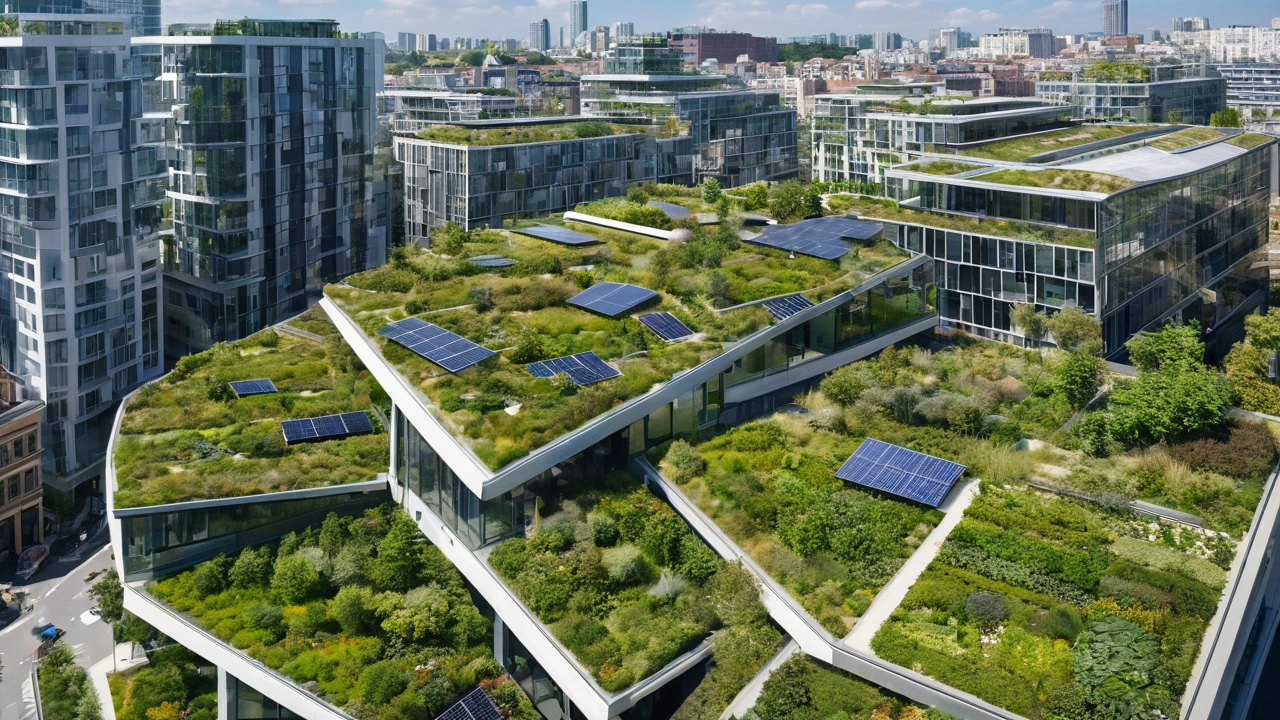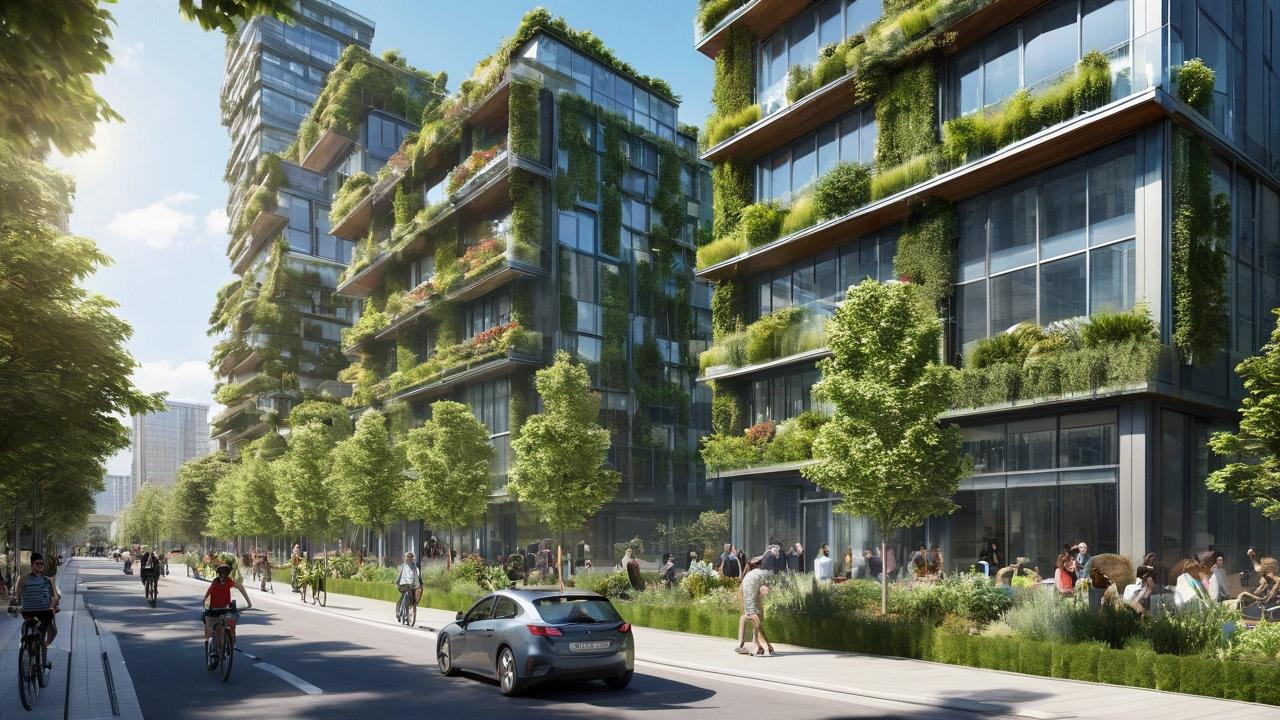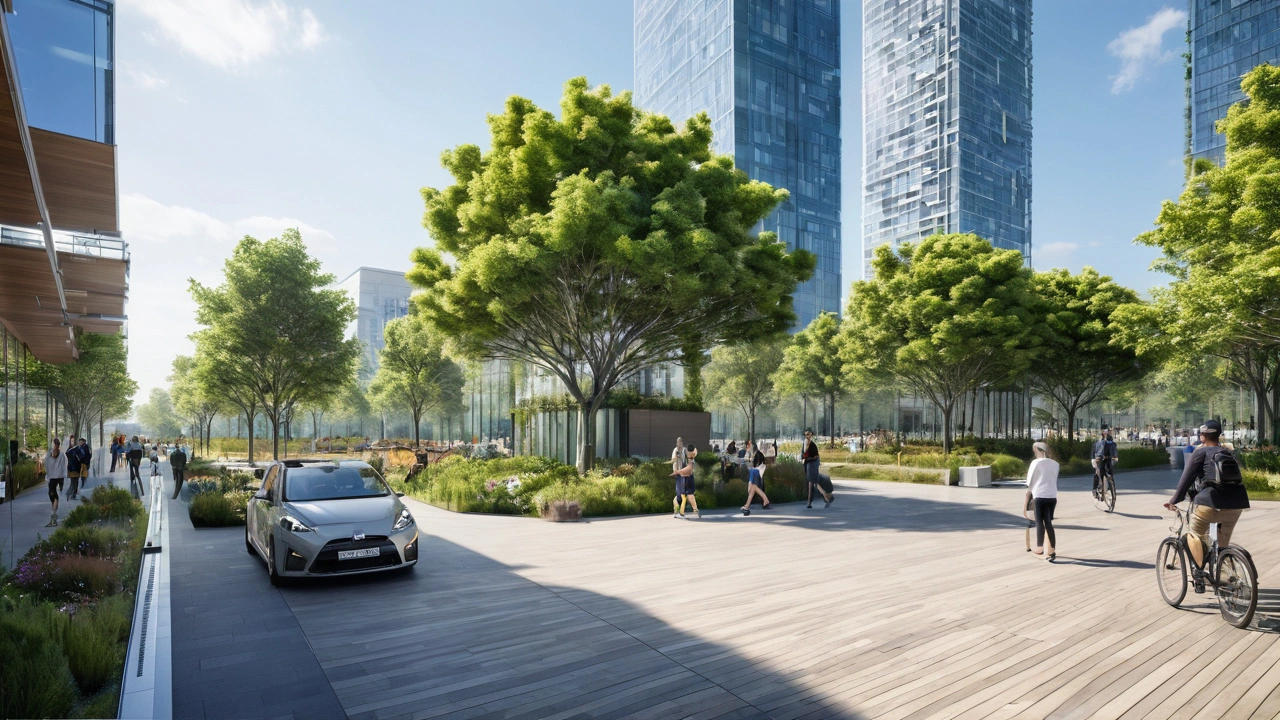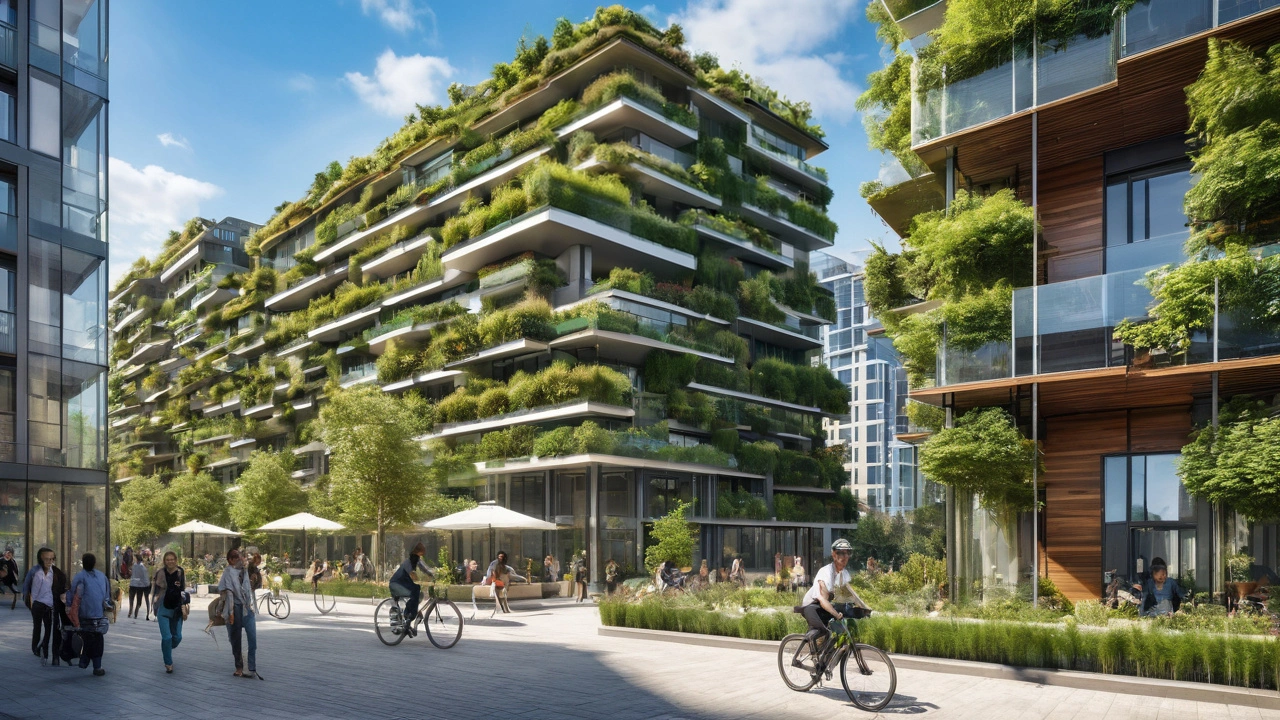Sustainable Architecture: Embracing Eco-Friendly Building Designs
 Aug, 3 2024
Aug, 3 2024
In the heart of a bustling city or the tranquility of nature, the structures we create massively impact our world. Sustainable architecture, with its focus on eco-friendly building designs, represents a transformative shift towards reducing this impact and promoting environmental harmony.
This approach to building design doesn't just aim to be aesthetically pleasing; it emphasizes efficiency, sustainability, and health. Whether you're an architect, a homeowner, or someone curious about the world of green buildings, understanding the core principles and benefits of sustainable architecture can offer insights into a more eco-conscious future.
From innovative techniques to practical tips for your own projects, embracing sustainable architecture is a step towards responsible living. Let’s journey through this fascinating topic and uncover the ways to build not just structures, but a sustainable legacy.
- Principles of Sustainable Architecture
- Benefits of Eco-Friendly Building Designs
- Innovative Techniques in Green Building
- Tips for Sustainable Home Projects
Principles of Sustainable Architecture
Sustainable architecture is built on strong principles that guide every aspect of design and construction. First among these is the idea of minimizing environmental impact. This starts with careful site selection, making sure the location doesn't disturb natural habitats or lead to excessive resource consumption. Clever site orientation also plays a key role, harnessing natural light and ventilation to reduce energy needs.
Another core principle is the use of sustainable materials. This means opting for resources that are renewable, recycled, or can be sustainably sourced. Bamboo, reclaimed wood, and recycled metal are popular choices. These materials not only cut down on environmental degradation but also reduce the building's carbon footprint. This approach balances modern construction demands with ecological responsibility.
Energy efficiency takes center stage in sustainable architecture. Buildings are designed to consume energy efficiently throughout their life cycle. This includes using high-quality insulation, energy-efficient windows, and advanced HVAC systems. Solar panels are increasingly common, converting sunlight into renewable energy. According to the International Energy Agency, solar energy accounted for nearly 60% of global renewable capacity additions in 2020, underlining its growing importance.
Moreover, water conservation is a crucial element of sustainable design. Buildings might incorporate rainwater harvesting systems, low-flow fixtures, and greywater recycling. These strategies cut down on water waste and make buildings more self-sufficient. Additionally, landscaping choices like native plants reduce the need for irrigation, staying in harmony with local ecosystems.
Indoor environmental quality cannot be overlooked. A focus on natural light, ventilation, and non-toxic materials ensures that the indoor spaces promote health and well-being. By using plants for air purification and materials free from volatile organic compounds (VOCs), architects can create healthier living and working environments.
"Sustainable design encompasses more than just energy efficiency. It’s about creating spaces that nurture the well-being of both people and the planet," – William McDonough.A holistic approach also means considering the structure's entire life cycle. This involves designing for longevity and adaptability, so buildings can easily be repurposed rather than demolished. Long-lasting materials and timeless design principles reduce the need for frequent renovations and waste.
Finally, integrating sustainable technology is a game-changer. Smart home systems that regulate energy use, water metering to track and reduce consumption, and IoT devices for real-time monitoring all contribute to making buildings smarter and greener. These technologies make it easier for occupants to live sustainably without compromising comfort or convenience.

Benefits of Eco-Friendly Building Designs
Eco-friendly building designs offer numerous benefits that extend far beyond just the environmental sphere. One main advantage is the significant reduction in energy consumption. Buildings designed with sustainability in mind often incorporate energy-efficient systems such as solar panels, energy-efficient lighting, and heating systems. This not only helps in reducing the carbon footprint but also leads to considerable savings on energy bills.
Moreover, sustainable buildings prioritize the use of sustainable materials. These materials, such as bamboo, reclaimed wood, and recycled metal, have a lesser environmental impact than conventional construction materials. Utilizing these resources not only preserves natural habitats but also reduces waste and promotes recycling efforts.
An important aspect of eco-friendly designs is the improvement of indoor environmental quality. Green buildings often focus on maximizing natural light, using non-toxic paints, and ensuring proper ventilation systems. These aspects contribute to healthier living and working environments, which can enhance occupants' mental and physical well-being. According to the World Green Building Council, improved air quality in green buildings can lead to a 20% to 25% increase in cognitive function and productivity.
"A green building is not defined solely by the materials and technologies used but by the approach to design and function, ensuring minimal environmental impact throughout its life cycle." - Jane Henley, former CEO of World Green Building Council
Eco-friendly designs also play a crucial role in water conservation. Implementing systems such as rainwater harvesting, low-flow fixtures, and efficient irrigation systems can drastically reduce water usage. These measures are particularly important in areas facing water scarcity, helping to ensure sustainable use of this precious resource.
From a broader perspective, sustainable architecture can contribute significantly to combating climate change. By incorporating elements that reduce greenhouse gas emissions and resource consumption, green buildings help create more resilient communities. They set a benchmark for environmental responsibility that can inspire other industries and sectors to adopt sustainable practices.
Add to this the longevity and durability of sustainable structures, which often require less maintenance and have longer lifespans compared to traditional buildings. This not only leads to reduced repair costs but also minimalizes the environmental impact associated with demolition and rebuilding efforts.
Incorporating eco-friendly designs into urban planning can also help mitigate the effects of urban heat islands. Green roofs, urban parks, and strategic landscaping can absorb heat, lower ambient temperatures, and improve the overall quality of life in urban areas. These elements provide a natural habitat for urban wildlife and improve biodiversity, making cities more livable.
Socially, green buildings can enhance community well-being by fostering a sense of ecological responsibility and awareness. Educational programs and community initiatives linked with sustainable buildings can encourage local populations to adopt more sustainable practices in their daily lives, creating a ripple effect of environmental stewardship.

Innovative Techniques in Green Building
Green building has evolved significantly over the past few decades, driven by advancements in technology and a growing awareness of environmental sustainability. One of the most notable developments is the use of renewable energy sources. Solar panels, wind turbines, and geothermal systems are becoming increasingly common in new constructions. These technologies harness natural resources to provide clean, renewable power, reducing dependency on fossil fuels and decreasing carbon footprints.
Another exciting innovation is the advancement in building materials. Traditional materials like concrete and steel are being replaced or supplemented with more sustainable alternatives. For example, cross-laminated timber (CLT) is gaining popularity due to its strength, sustainability, and carbon-sequestering properties. Recycled materials are also being used creatively, including recycled glass, plastics, and metal. These materials not only reduce waste but also often provide unique aesthetic qualities.
Smart building technologies are another game-changer in the realm of green architecture. These systems use sensors and automation to optimize energy usage, control lighting, and manage HVAC systems efficiently. For instance, a smart thermostat can learn a user’s habits and adjust the temperature accordingly, reducing energy consumption. Integration with renewable energy sources further enhances the efficiency of these systems.
An interesting technique that has been gaining attention is the use of green roofs and living walls. Green roofs are covered with vegetation, which helps in temperature regulation, improves air quality, and reduces stormwater runoff. Living walls, or vertical gardens, bring similar benefits but are installed on vertical surfaces. Both techniques contribute to urban biodiversity and offer a touch of nature in concrete jungles.
Water conservation is another critical aspect of sustainable building design. Techniques such as rainwater harvesting, greywater recycling, and low-flow fixtures are being implemented to reduce water usage. For example, collecting and reusing rainwater for irrigation or flushing toilets can significantly cut down on water consumption.
"Sustainable architecture is not just a trend, it's a necessity. We must rethink our building strategies to mitigate the environmental impact," says Jane Drew, an expert in green construction.
Lastly, the concept of passive design is making waves in eco-friendly architecture. Passive design strategies aim to maximize natural light and ventilation, reducing reliance on artificial lighting and mechanical cooling or heating systems. Strategic placement of windows, thermal mass, and insulation are crucial elements in passive design, which can dramatically reduce energy consumption.
Implementing these innovative techniques requires a commitment to sustainability and a willingness to embrace new technologies and practices. As we continue to develop and refine these methods, the future of green building looks promising for both the environment and the inhabitants of these eco-friendly spaces.

Tips for Sustainable Home Projects
Embracing sustainable practices in our homes is not just a trend; it's a necessity for a greener future. If you’re embarking on a home project and wish to make it more eco-friendly, there are myriad ways to achieve this, regardless of your budget or scope.
To start, consider sourcing sustainable materials. Opt for recycled or reclaimed wood for your flooring and furniture. Not only do these materials add unique character to your home, but they also reduce the demand for new resources. For insulation, materials such as cellulose or sheep's wool are excellent choices, boasting both efficiency and environmental friendliness.
Another significant aspect of sustainable home projects is energy efficiency. Modern energy-efficient windows can make a huge difference in minimizing heat loss. Meanwhile, installing solar panels on your roof can drastically cut down your electricity bills and carbon footprint. In fact, many governments offer incentives or rebates for solar panel installations, making this a financially smart decision over the long term.
Water conservation should not be overlooked. Implementing rainwater harvesting systems can provide a sustainable water source for gardening or even household use if properly filtered. Low-flow showerheads and dual-flush toilets are simple yet effective steps to significantly cut down on water usage.
Home project aficionados should also look into smart home technologies. Thermostats controlled by AI algorithms can learn your schedule and adjust temperatures to save energy without sacrificing comfort. Similarly, LED lighting, while initially more expensive, will save you money in the long run due to its longevity and energy efficiency.
Sustainable landscaping can enrich your home’s exterior. Plant native species that require less water and care, encouraging local biodiversity. Creating a composting system in your backyard is another way to both reduce household waste and enrich your garden soil naturally.
Using low-VOC (Volatile Organic Compounds) paints is crucial for maintaining indoor air quality. VOCs can be harmful for both the environment and the health of your household. Many companies now offer low or zero-VOC paints in a wide range of colors and finishes.
For those installing new major appliances, it's smart to choose Energy Star-rated options. These appliances are designed to consume less energy and water, which translates to lower utility bills and a smaller environmental footprint. From dishwashers to refrigerators, every appliance upgrade can have a substantial impact.
Of course, sustainable living extends beyond the building phase. Consider setting up a recycling center in your home to manage waste efficiently. Encourage family members to be diligent about sorting recyclables and reducing single-use plastics.
Sustainable home projects are all about making conscious choices. As famed architect Frank Lloyd Wright once said, "Study nature, love nature, stay close to nature. It will never fail you."
Incorporating even a few of these tips can set you on a path toward a more sustainable and eco-friendly living environment. Every small step counts, and collectively, these efforts make a significant difference in reducing our ecological footprint.